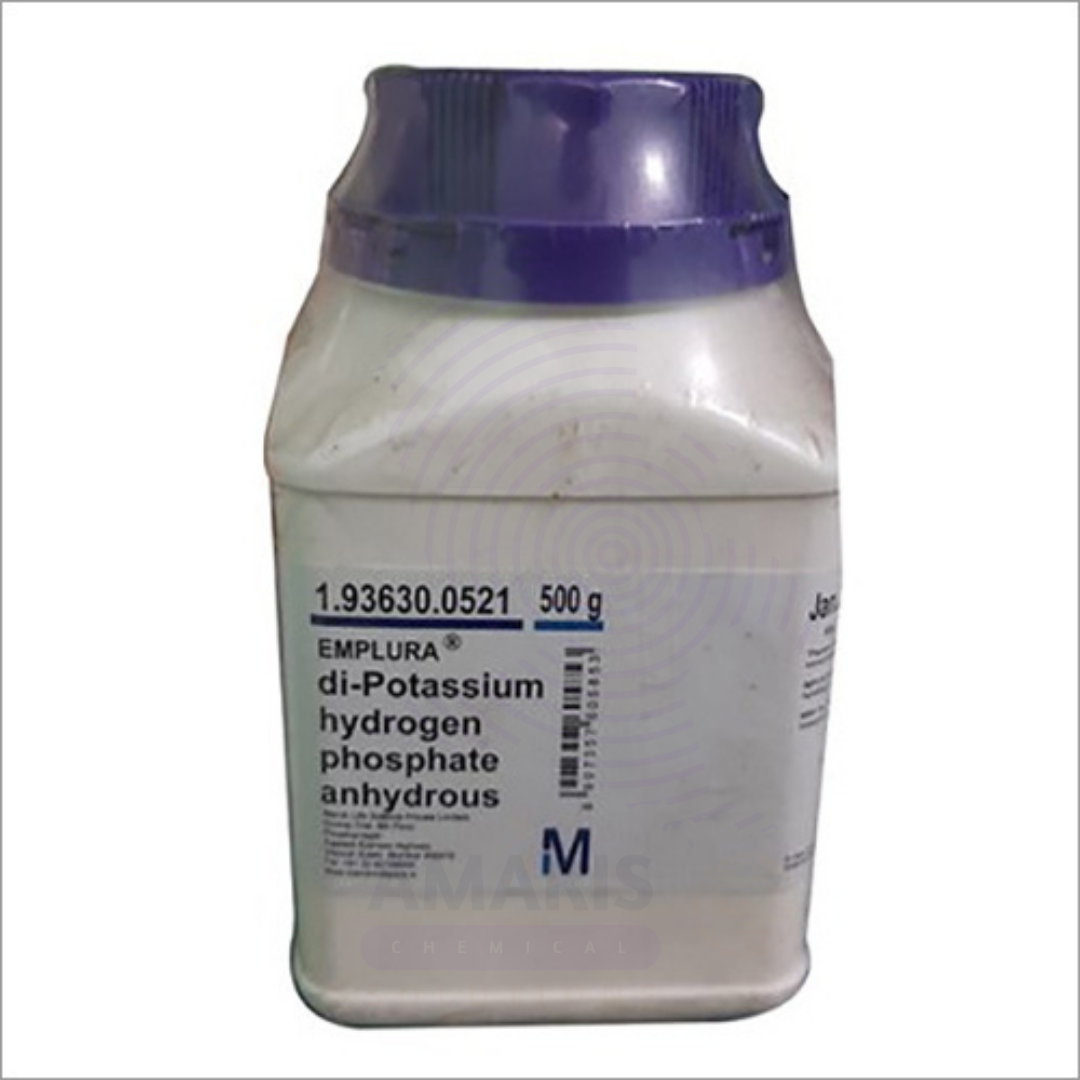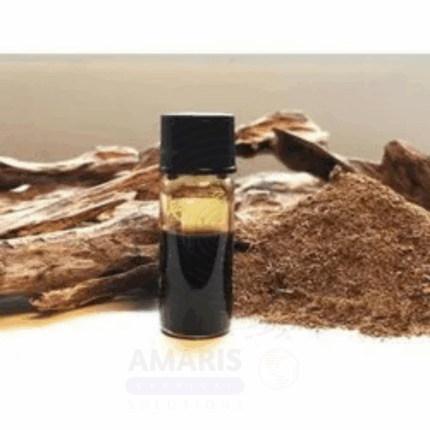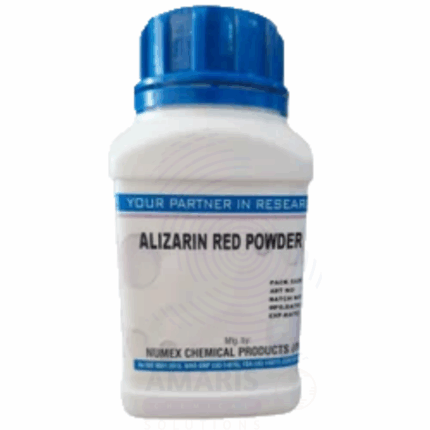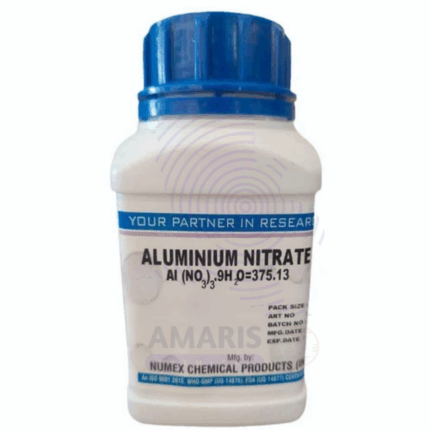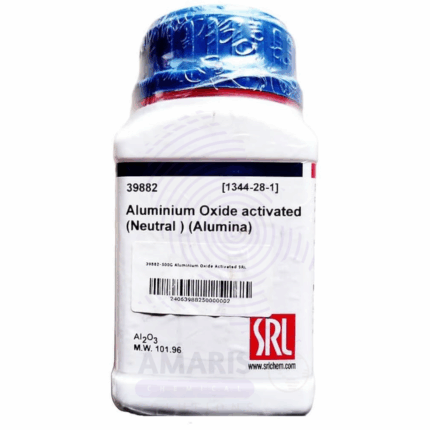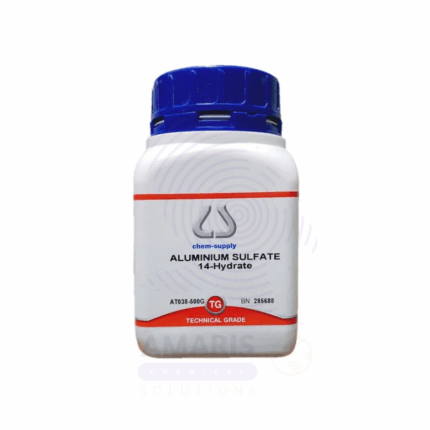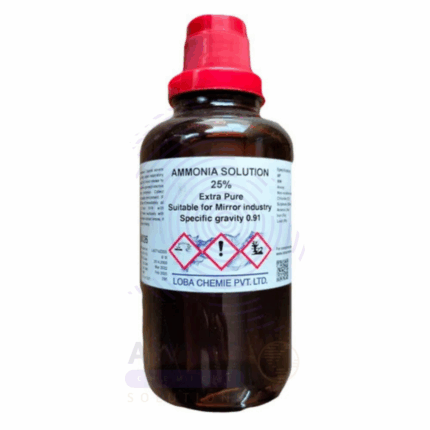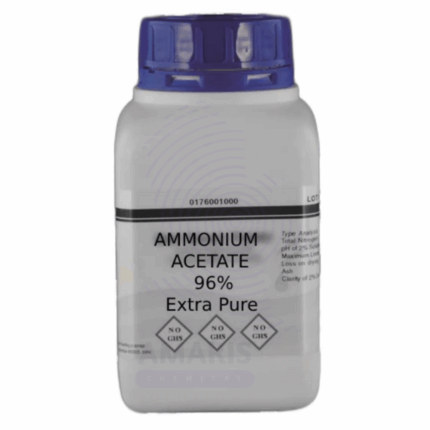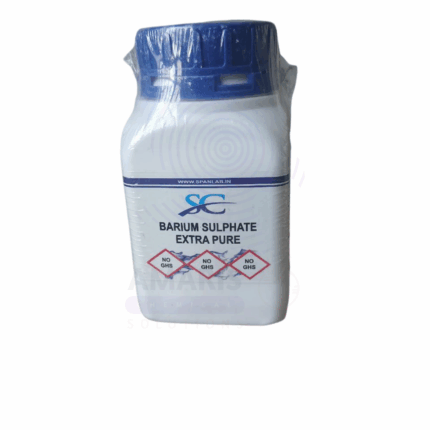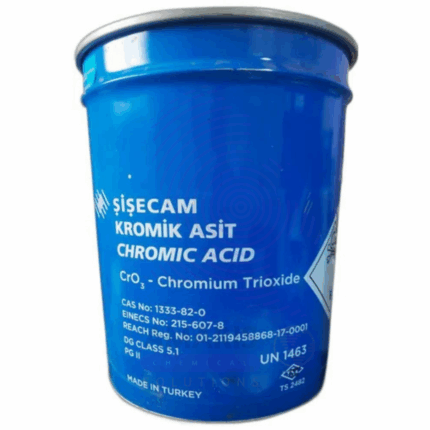Dipotassium Hydrogen Phosphate Extra Pure
$ 19.50 Original price was: $ 19.50.$ 19.32Current price is: $ 19.32.
Dipotassium Hydrogen Phosphate Extra Pure is a high-purity inorganic salt commonly used in laboratories as a buffering agent, particularly in the preparation of phosphate buffer solutions for biochemical and analytical procedures. It plays a vital role in maintaining stable pH conditions in enzymatic and molecular biology experiments. Additionally, it serves as a source of potassium and phosphorus in various chemical reactions and culture media. This extra pure grade ensures excellent consistency and low levels of contaminants, making it ideal for high-precision lab work. It should be stored in a cool, dry place, tightly sealed to avoid moisture absorption.
Dipotassium Hydrogen Phosphate Extra Pure
Primary Uses
- Buffer Preparation
- Commonly used to make phosphate buffer solutions in biochemistry, molecular biology, and analytical chemistry.
- pH Control
- Acts as a mildly basic buffering agent to stabilize pH, especially in combination with monopotassium phosphate or phosphoric acid.
- Analytical Reagent
- Employed in volumetric analysis, spectrophotometry, and as a component in media preparations.
Secondary Uses
- Culture Media – Used in microbial growth media to provide phosphates and potassium ions.
- Reagent-Grade Preparations – Assists in ion chromatography or as a base solution for chemical titrations.
- Water Chemistry Studies – Used in ion exchange and phosphate removal experiments.
| PACK SIZE |
500 grams Plastic Tin |
|---|
-
Basic Identification Attributes
- Chemical Name: Dipotassium Hydrogen Phosphate
- Other Names: Potassium phosphate dibasic, Dipotassium phosphate
- Chemical Formula: K₂HPO₄
- CAS Number: 7758-11-4
- Grade: Extra Pure (Laboratory Grade)
- Molecular Weight: 174.18 g/mol
- Appearance: White crystalline powder or granules
- Odor: Odorless
2. Physical & Chemical Properties
- Melting Point: ~240 °C (decomposes)
- Solubility in Water: Soluble (149 g/L at 25 °C)
- pH (1% solution): ~8.6 – 9.6
- Density: ~2.44 g/cm³
- Hygroscopicity: Slightly hygroscopic
- Stability: Stable under normal conditions
3. Safety & Hazard Attributes
- GHS Classification: Not classified as hazardous
- Hazard Statements: None (generally considered low hazard)
- PPE Requirements:
- Lab coat
- Safety goggles
- Nitrile or latex gloves
- First Aid:
- Inhalation: Move to fresh air
- Skin Contact: Wash with soap and water
- Eye Contact: Rinse with plenty of water
- Ingestion: Rinse mouth, seek medical advice if unwell
4. Storage & Handling Attributes
- Storage Conditions:
- Store in a cool, dry, and well-ventilated area
- Keep container tightly closed
- Protect from moisture and incompatible materials (strong acids)
- Handling Notes:
- Avoid generating dust
- Handle with standard laboratory precautions
5. Regulatory & Compliance Attributes
- EC Number: 231-834-5
- UN Number: Not applicable (non-hazardous)
- REACH Registration: Registered
- DOT Classification (US): Not regulated
- Hazard Class (Transport): Not classified
6. Laboratory Applications
- Primary Uses:
- Buffering agent in biochemical and molecular biology labs
- Component of phosphate-buffered saline (PBS)
- Used in fertilizer research and nutrient media
- pH adjustment in laboratory experiments
- Other Uses:
- Food additive (when food-grade)
- Water treatment studies
- Reagent in pharmaceutical formulation R&D
SAFETY PRECAUTIONS
- PPE Required:
- Lab coat
- Gloves (nitrile or latex)
- Safety goggles
- Storage Guidelines:
- Store in a cool, dry, well-ventilated area
- Keep container tightly sealed
- Avoid moisture exposure (hygroscopic in nature)
- Handling Tips:
- Use clean, dry tools to avoid contamination
- Prepare solutions fresh when possible to maintain buffer integrity
FIRST AID MEASURES
- Inhalation: Move to fresh air; seek attention if irritation persists
- Skin Contact: Wash with plenty of water and soap
- Eye Contact: Rinse with water for 15 minutes and consult a physician
- Ingestion: Rinse mouth; not expected to be toxic in small amounts but seek medical advice
FIRE SAFETY MEASURES
- Flammability: Not flammable
- Firefighting Media: Water spray, foam, dry chemical, or CO₂
- Decomposition Products: May release phosphorus oxides at high temperatures


 Preservatives(food)
Preservatives(food) Flavor Enhancers
Flavor Enhancers Acidulants
Acidulants Sweeteners
Sweeteners Antioxidants
Antioxidants Colorants(food)
Colorants(food) Nutraceutical Ingredients (food)
Nutraceutical Ingredients (food) Nutrient Supplements
Nutrient Supplements Emulsifiers
Emulsifiers
 Collectors
Collectors Dust Suppressants
Dust Suppressants Explosives and Blasting Agents
Explosives and Blasting Agents Flocculants and Coagulants
Flocculants and Coagulants Frothers
Frothers Leaching Agents
Leaching Agents pH Modifiers
pH Modifiers Precious Metal Extraction Agents
Precious Metal Extraction Agents
 Antioxidants(plastic)
Antioxidants(plastic) Colorants (Pigments, Dyes)
Colorants (Pigments, Dyes) Fillers and Reinforcements
Fillers and Reinforcements Flame Retardants
Flame Retardants Monomers
Monomers Plasticizers
Plasticizers Polymerization Initiators
Polymerization Initiators Stabilizers (UV, Heat)
Stabilizers (UV, Heat)
 Antifoaming Agents
Antifoaming Agents Chelating Agents
Chelating Agents Coagulants and Flocculants
Coagulants and Flocculants Corrosion Inhibitors
Corrosion Inhibitors Disinfectants and Biocides
Disinfectants and Biocides Oxidizing Agents
Oxidizing Agents pH Adjusters
pH Adjusters Scale Inhibitors( water)
Scale Inhibitors( water)
 Antioxidants(cosmetic)
Antioxidants(cosmetic) Emollients
Emollients Fragrances and Essential Oils
Fragrances and Essential Oils Humectants
Humectants Preservatives
Preservatives Surfactants(cosmetic)
Surfactants(cosmetic) Thickeners
Thickeners UV Filters
UV Filters
 Fertilizers
Fertilizers Soil Conditioners
Soil Conditioners Plant Growth Regulators
Plant Growth Regulators Animal Feed Additives
Animal Feed Additives Biostimulants
Biostimulants Pesticides (Herbicides, Insecticides, Fungicides)
Pesticides (Herbicides, Insecticides, Fungicides)
 Active Pharmaceutical Ingredients (APIs)
Active Pharmaceutical Ingredients (APIs) Excipients
Excipients Solvents(pharmaceutical)
Solvents(pharmaceutical) Antibiotics
Antibiotics Antiseptics and Disinfectants
Antiseptics and Disinfectants Vaccine Adjuvants
Vaccine Adjuvants Nutraceutical Ingredients (pharmaceutical)
Nutraceutical Ingredients (pharmaceutical) Analgesics & Antipyretics
Analgesics & Antipyretics
 Analytical Reagents
Analytical Reagents Solvents(lab)
Solvents(lab) Chromatography Chemicals
Chromatography Chemicals Spectroscopy Reagents
Spectroscopy Reagents microbiology-and-cell-culture-reagents
microbiology-and-cell-culture-reagents Molecular Biology Reagents
Molecular Biology Reagents Biochemical Reagents
Biochemical Reagents Inorganic and Organic Standards
Inorganic and Organic Standards Laboratory Safety Chemicals
Laboratory Safety Chemicals Specialty Laboratory Chemicals(Special Laboratory Equipment)
Specialty Laboratory Chemicals(Special Laboratory Equipment)
 Demulsifiers
Demulsifiers Hydraulic Fracturing Fluids
Hydraulic Fracturing Fluids Scale Inhibitors(oil)
Scale Inhibitors(oil) Surfactants(oil)
Surfactants(oil) Drilling Fluids
Drilling Fluids
 Dyes and Pigments
Dyes and Pigments Bleaching Agents
Bleaching Agents Softening Agents
Softening Agents Finishing Agents
Finishing Agents Antistatic Agents
Antistatic Agents
 Admixtures
Admixtures Waterproofing Agents
Waterproofing Agents Sealants and Adhesives
Sealants and Adhesives Curing Compounds
Curing Compounds Concrete Repair Chemicals
Concrete Repair Chemicals Anti-Corrosion Coatings
Anti-Corrosion Coatings
 Surfactants(cleaning)
Surfactants(cleaning) Builders
Builders Enzymes
Enzymes Solvents (Cleaning)
Solvents (Cleaning) Fragrances
Fragrances
 Electronic Chemicals
Electronic Chemicals Catalysts
Catalysts Lubricants
Lubricants Photographic Chemicals
Photographic Chemicals Refrigerants
Refrigerants Automotive chemicals
Automotive chemicals Pyrotechnic Chemicals
Pyrotechnic Chemicals
 Biodegradable Surfactants
Biodegradable Surfactants Bio-based Solvents
Bio-based Solvents Renewable Polymers
Renewable Polymers Carbon Capture Chemicals
Carbon Capture Chemicals Wastewater Treatment Chemicals
Wastewater Treatment Chemicals
 Pigments
Pigments Solvents(paint)
Solvents(paint) Specialty Coatings
Specialty Coatings Binders/Resins
Binders/Resins Additives
Additives Driers
Driers Anti-Corrosion Agents
Anti-Corrosion Agents Functional Coatings
Functional Coatings Application-Specific Coatings
Application-Specific Coatings
 Fresh Herbs
Fresh Herbs Ground Spices
Ground Spices Whole Spices
Whole Spices Spice Blends
Spice Blends Dried Herbs
Dried Herbs
 Leavening Agents
Leavening Agents Dough Conditioners
Dough Conditioners Flour Treatments
Flour Treatments Fat Replacers
Fat Replacers Decoratives
Decoratives Preservatives(baking)
Preservatives(baking)
 Plasticizers & Softeners
Plasticizers & Softeners Reinforcing Agents
Reinforcing Agents Adhesion Promoters
Adhesion Promoters Vulcanizing Agents
Vulcanizing Agents Antidegradants
Antidegradants Blowing Agents
Blowing Agents Fillers & Extenders
Fillers & Extenders Accelerators & Retarders
Accelerators & Retarders